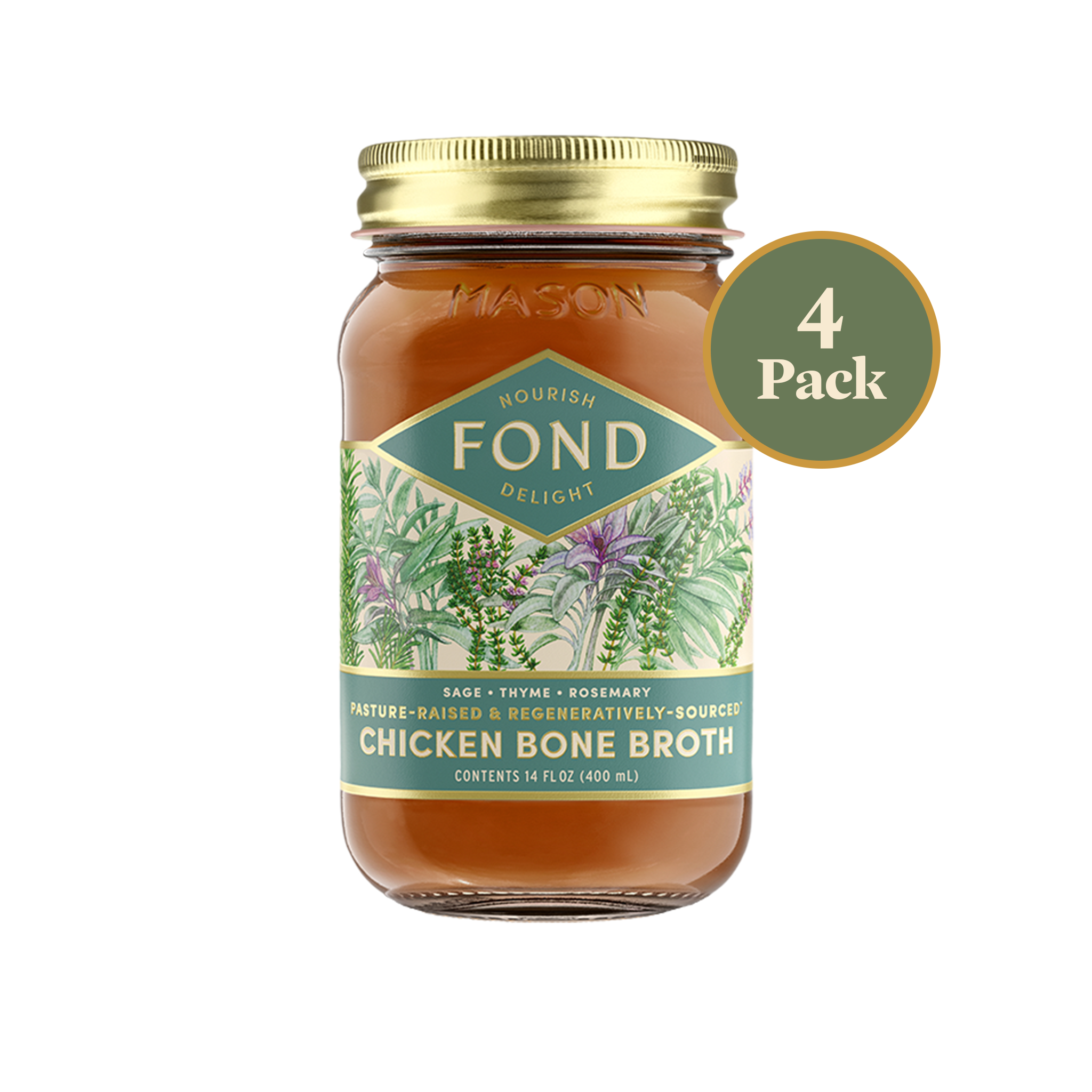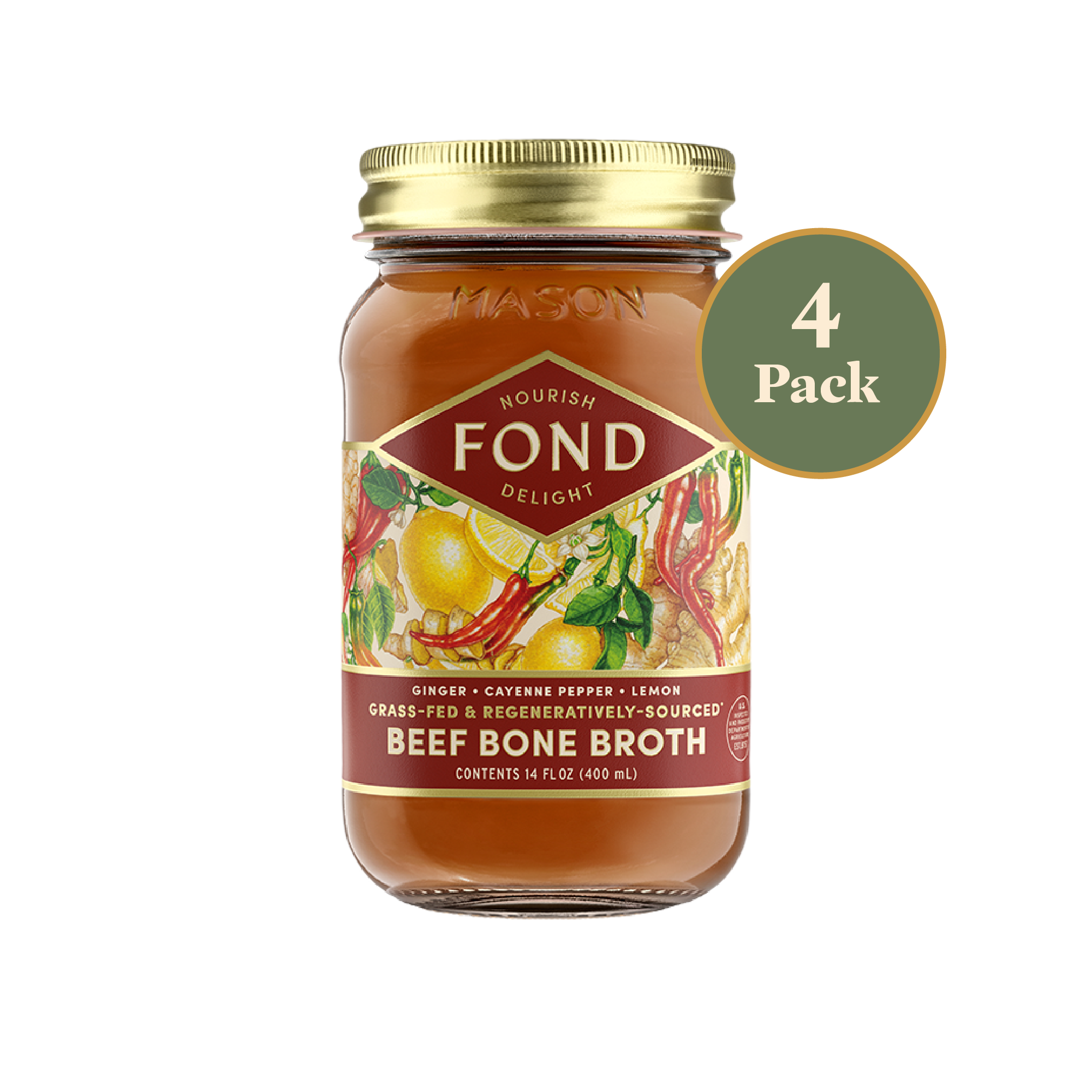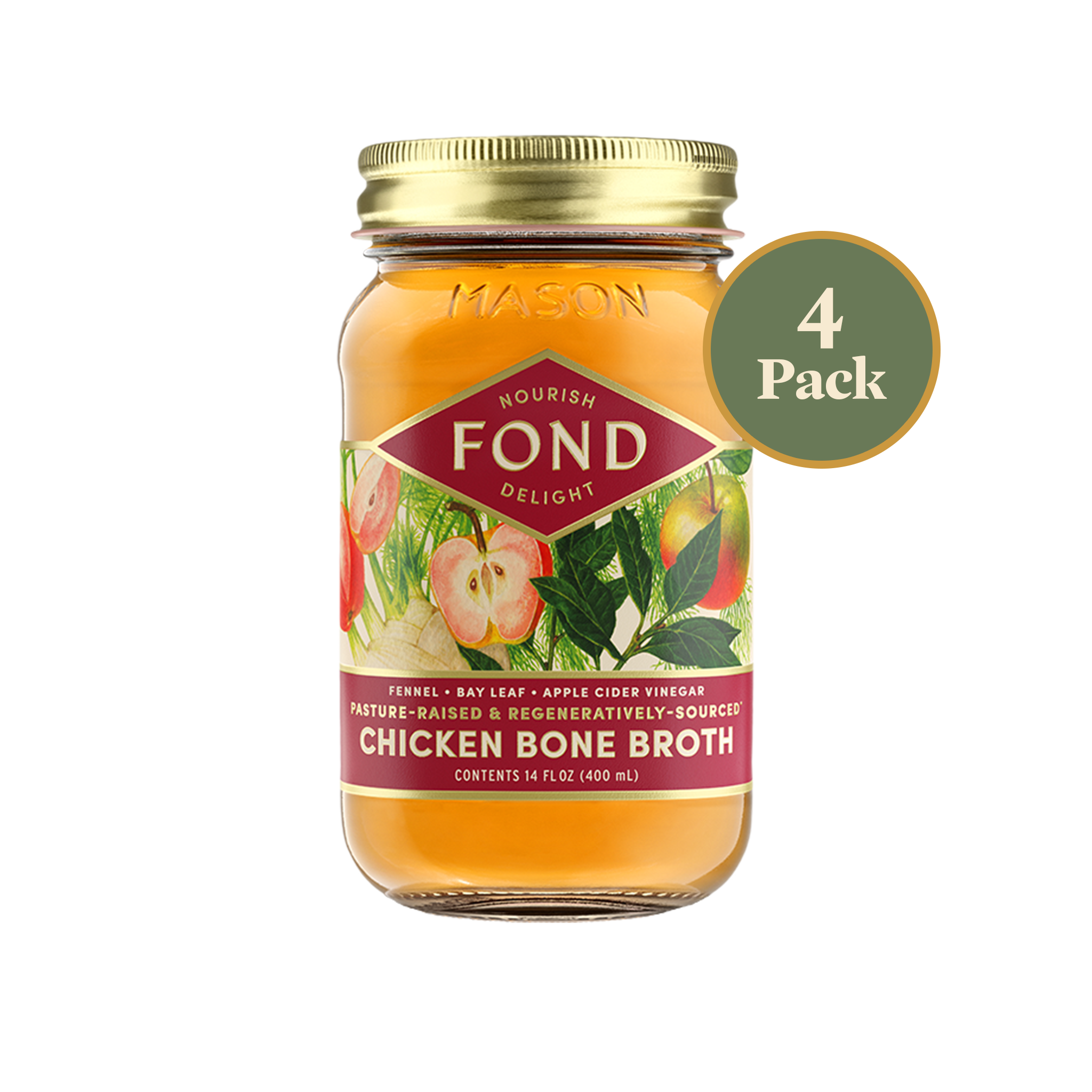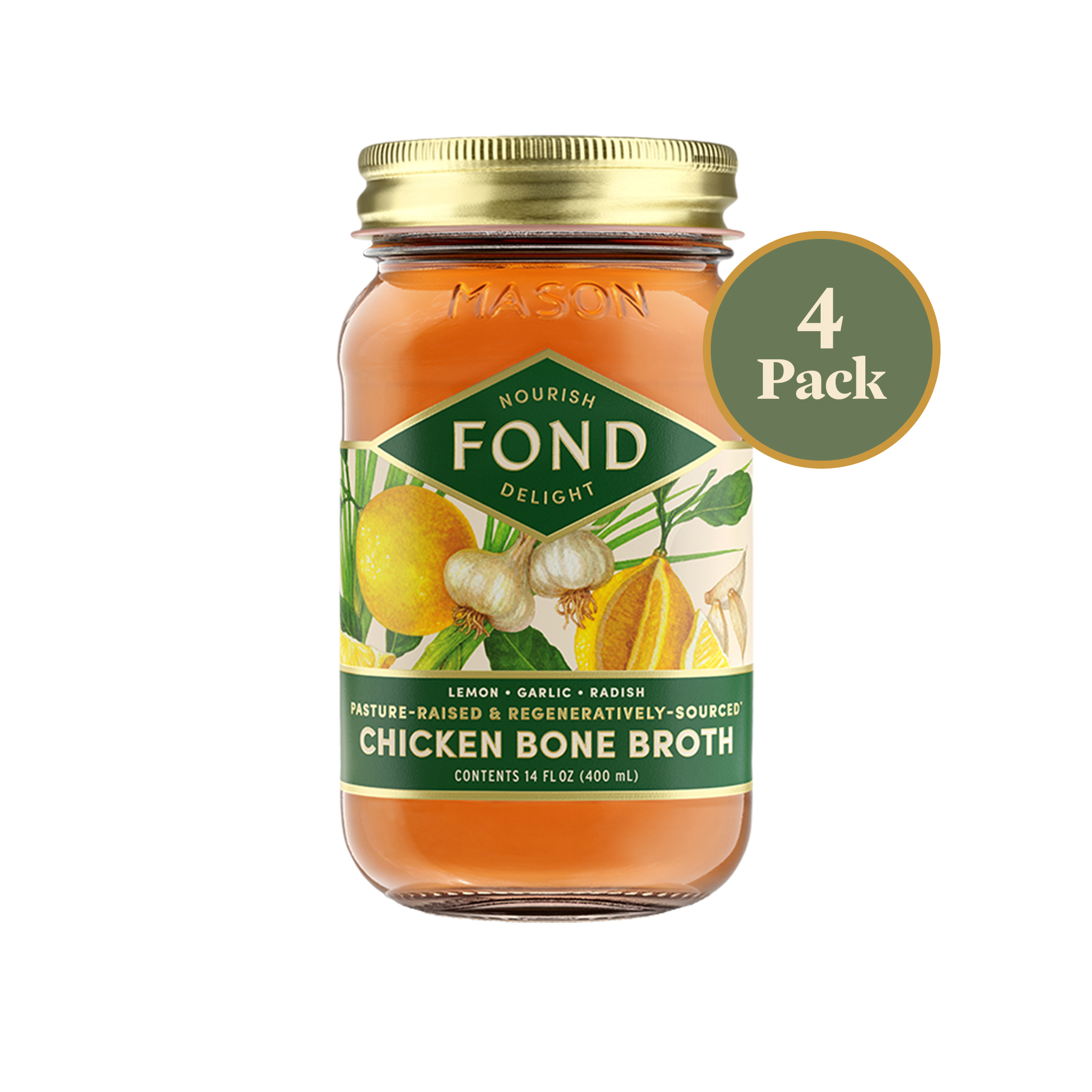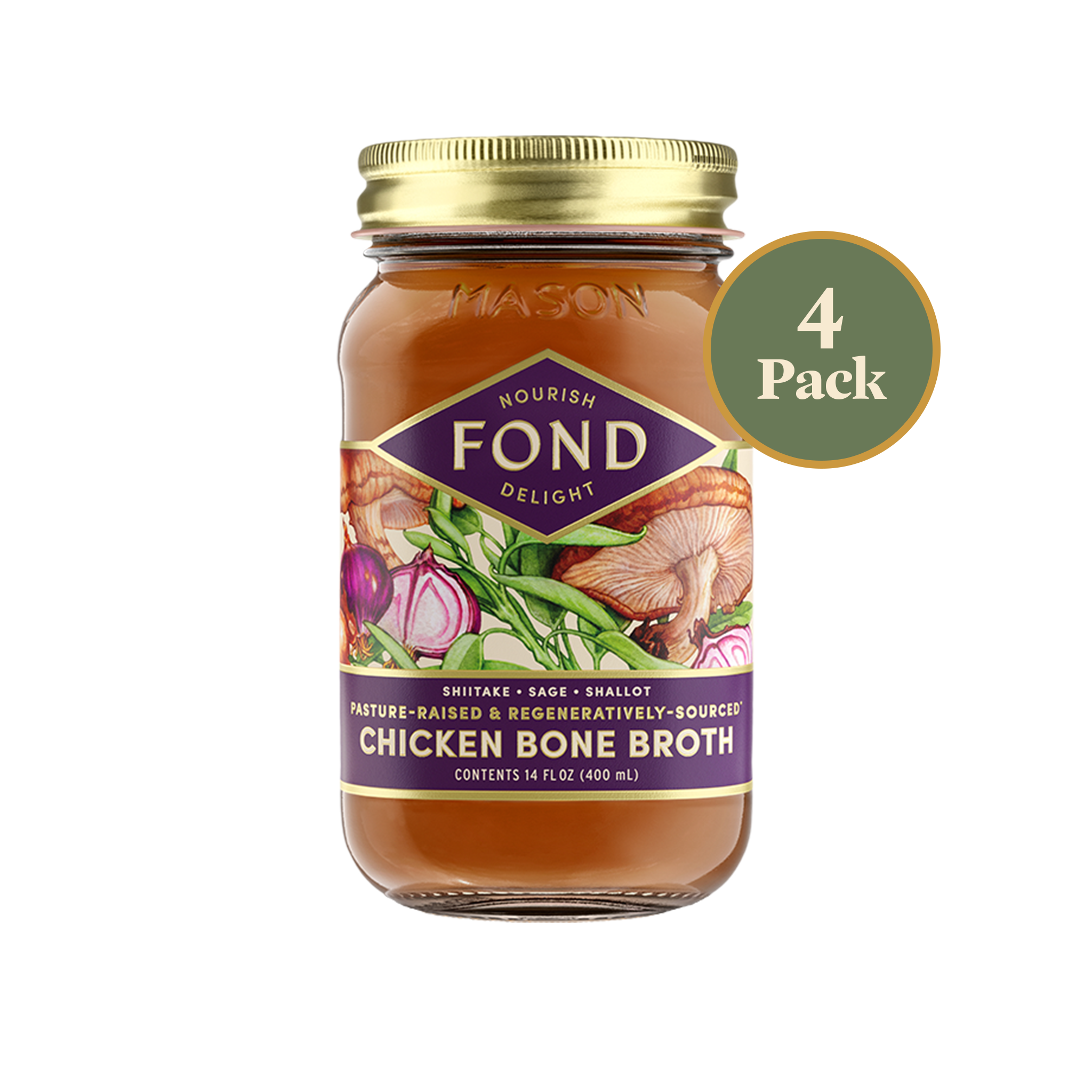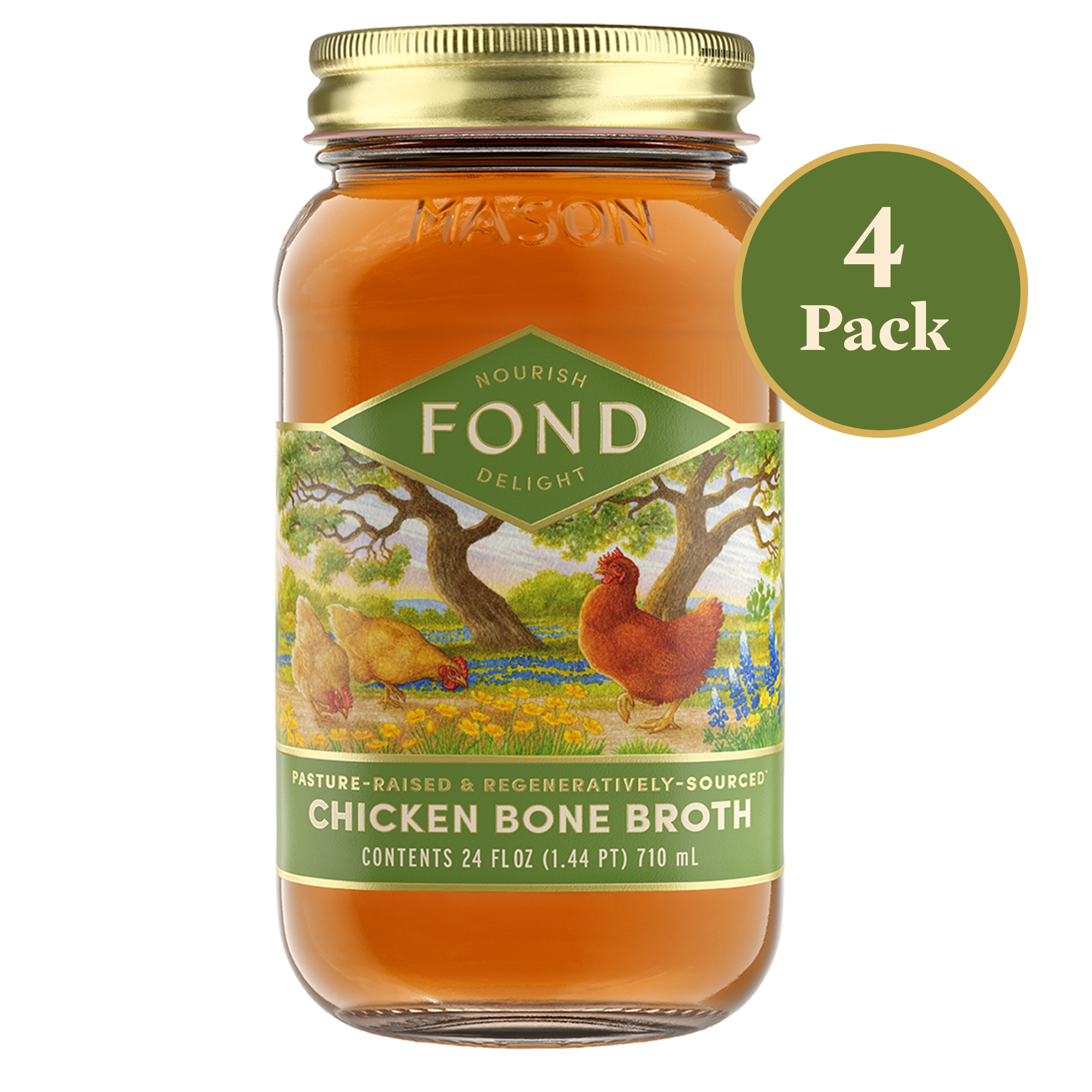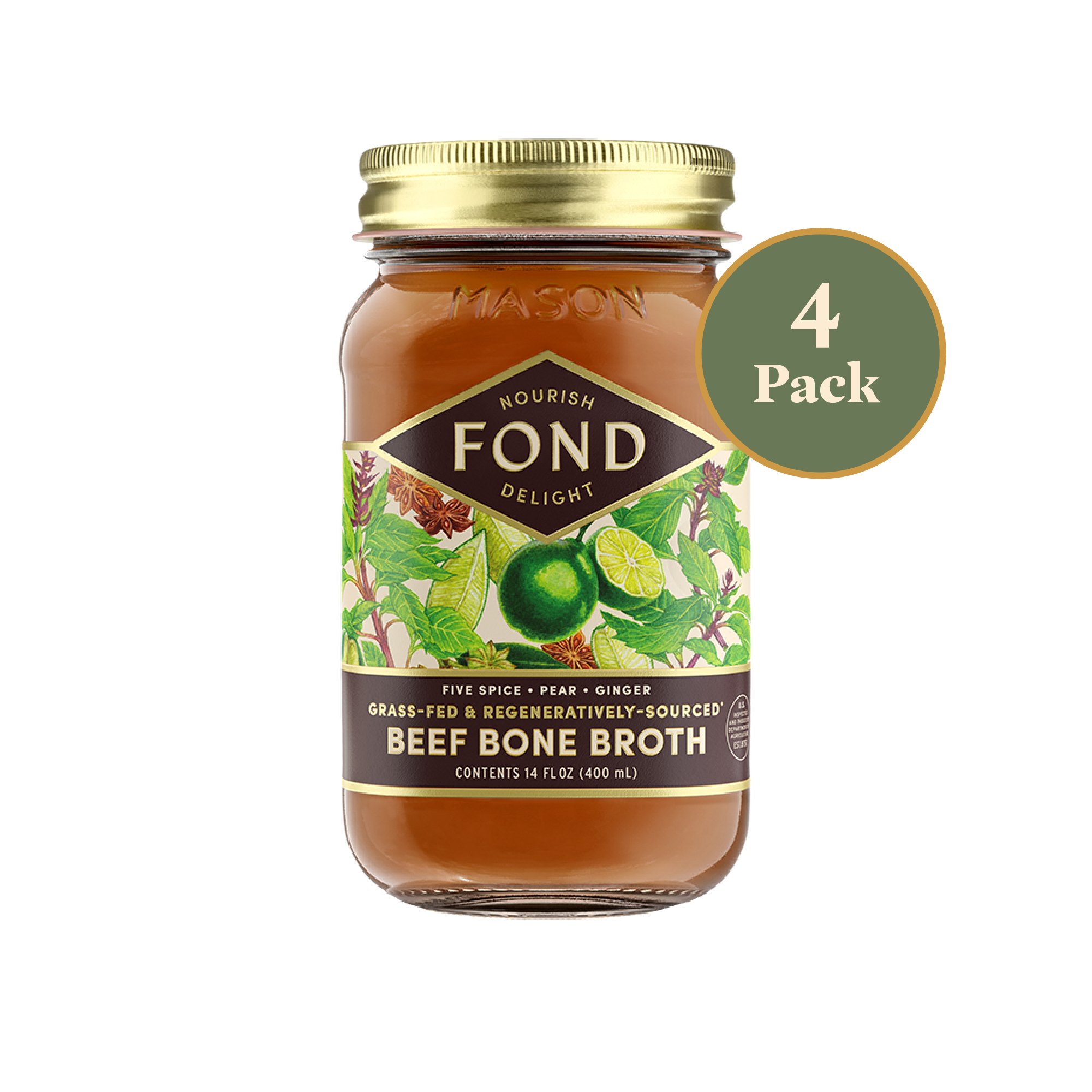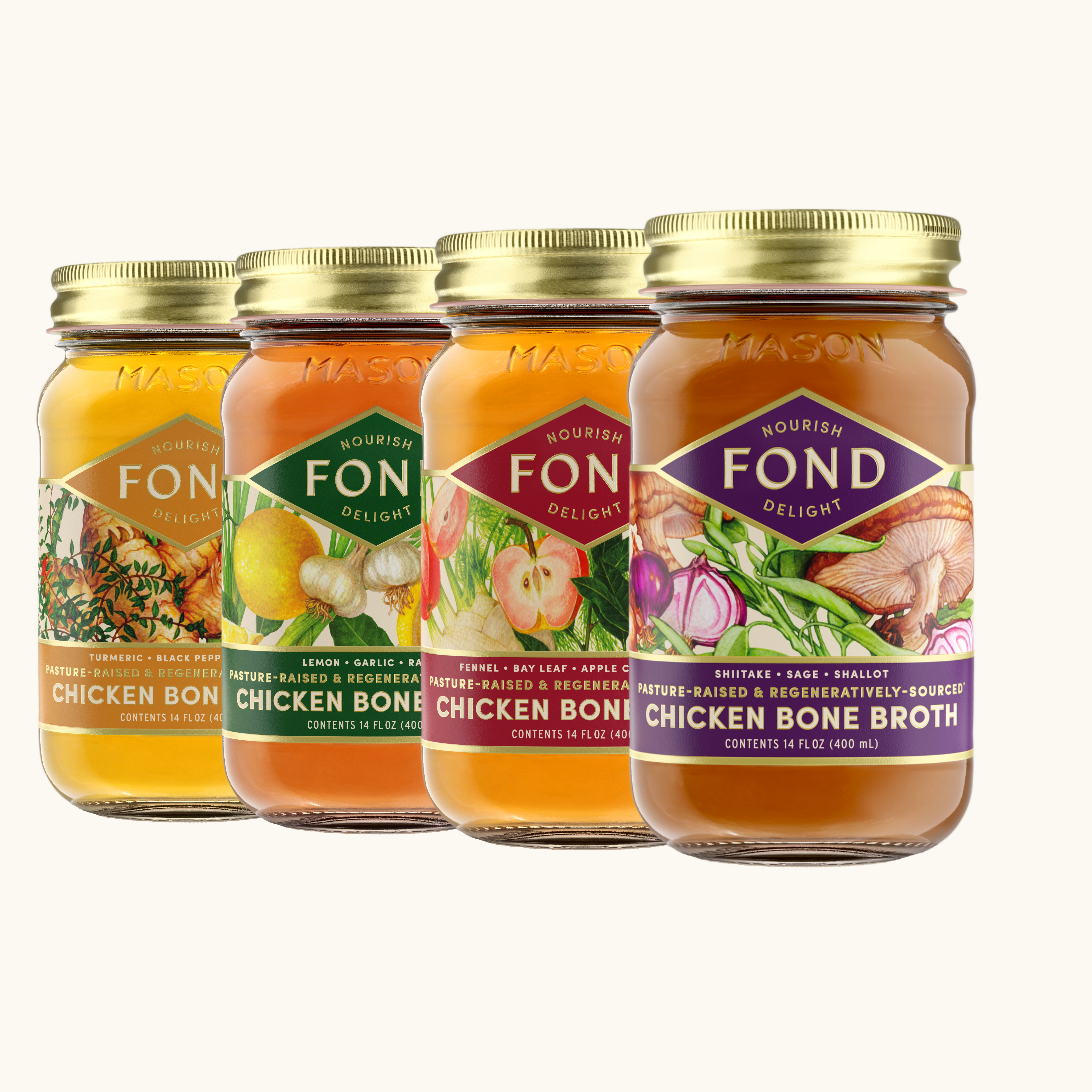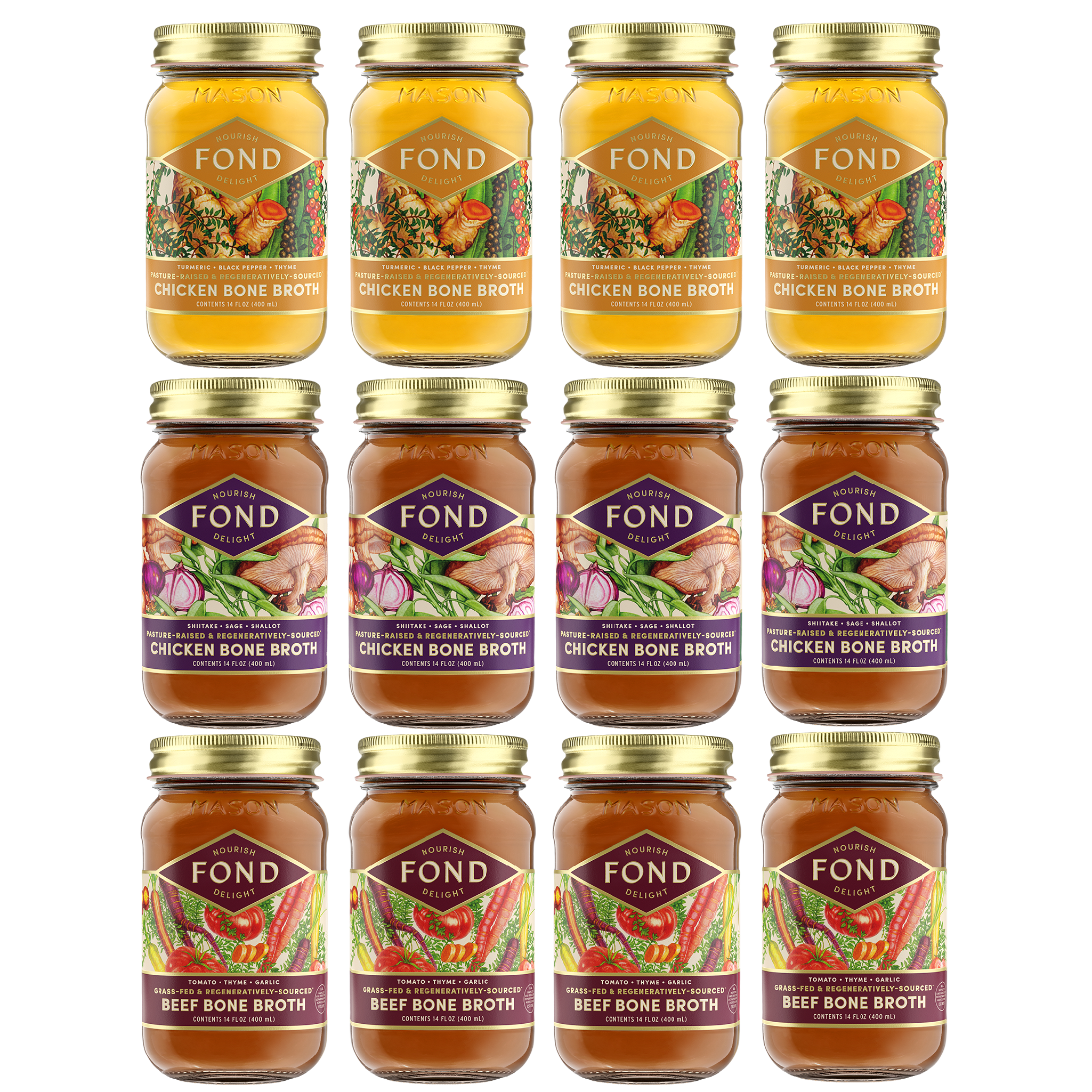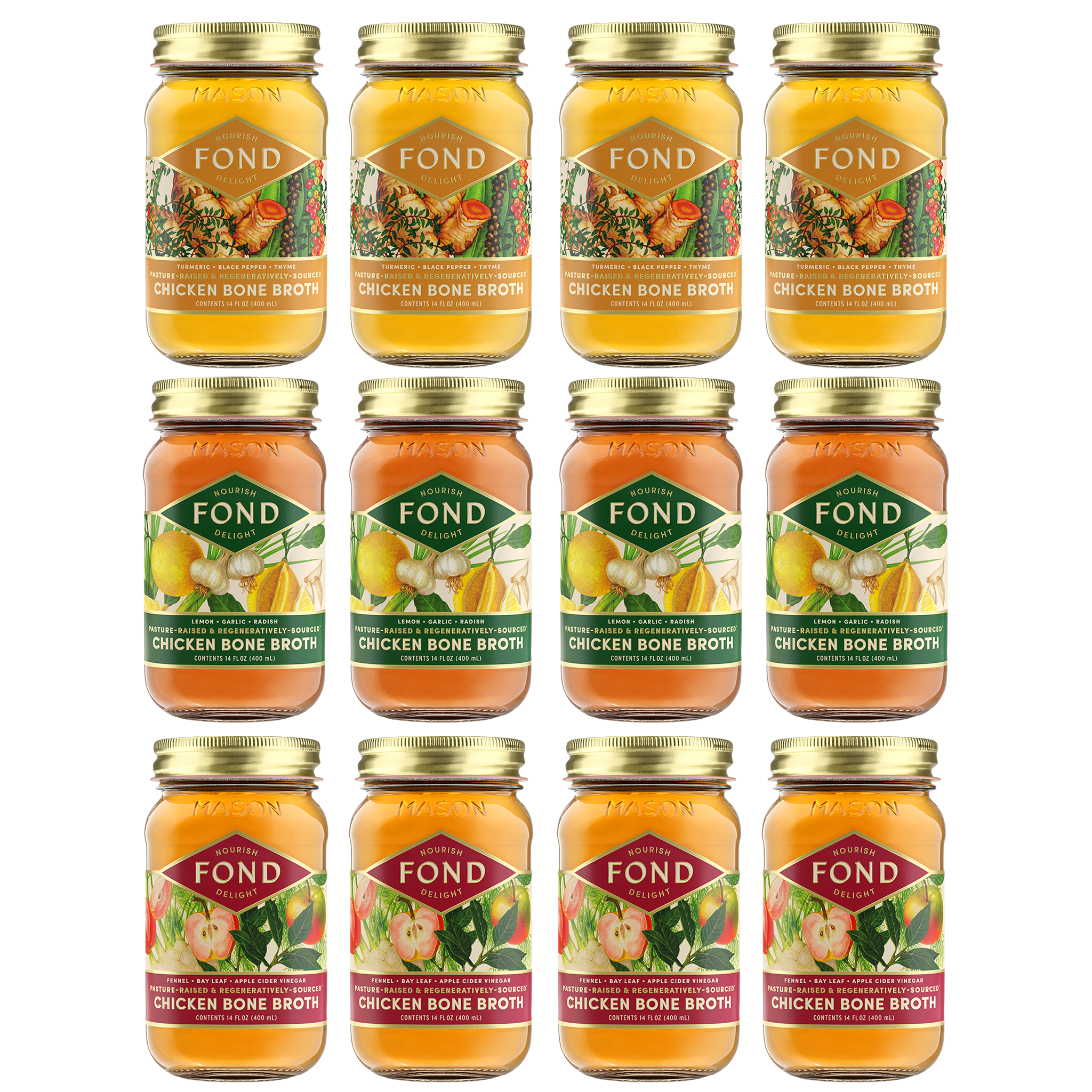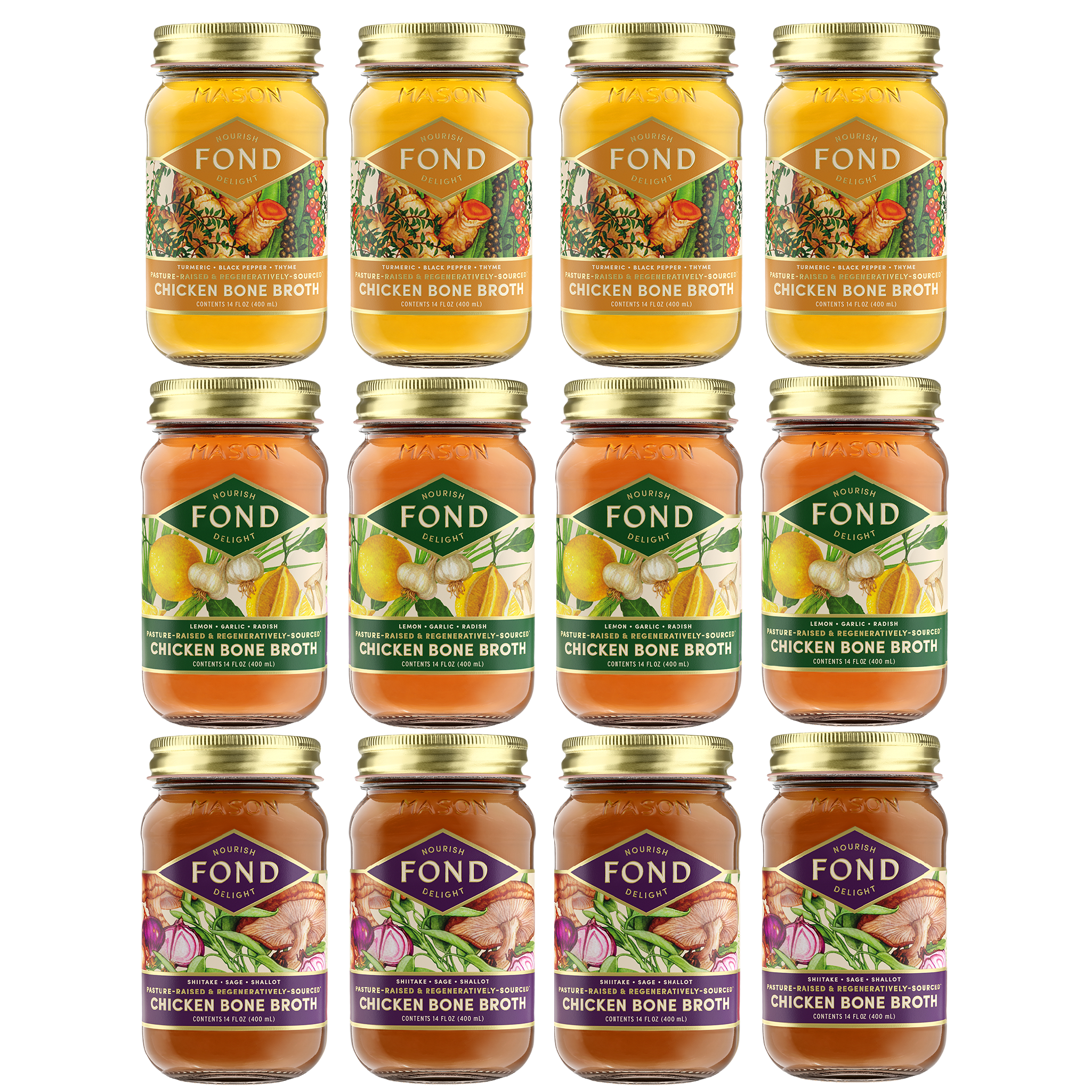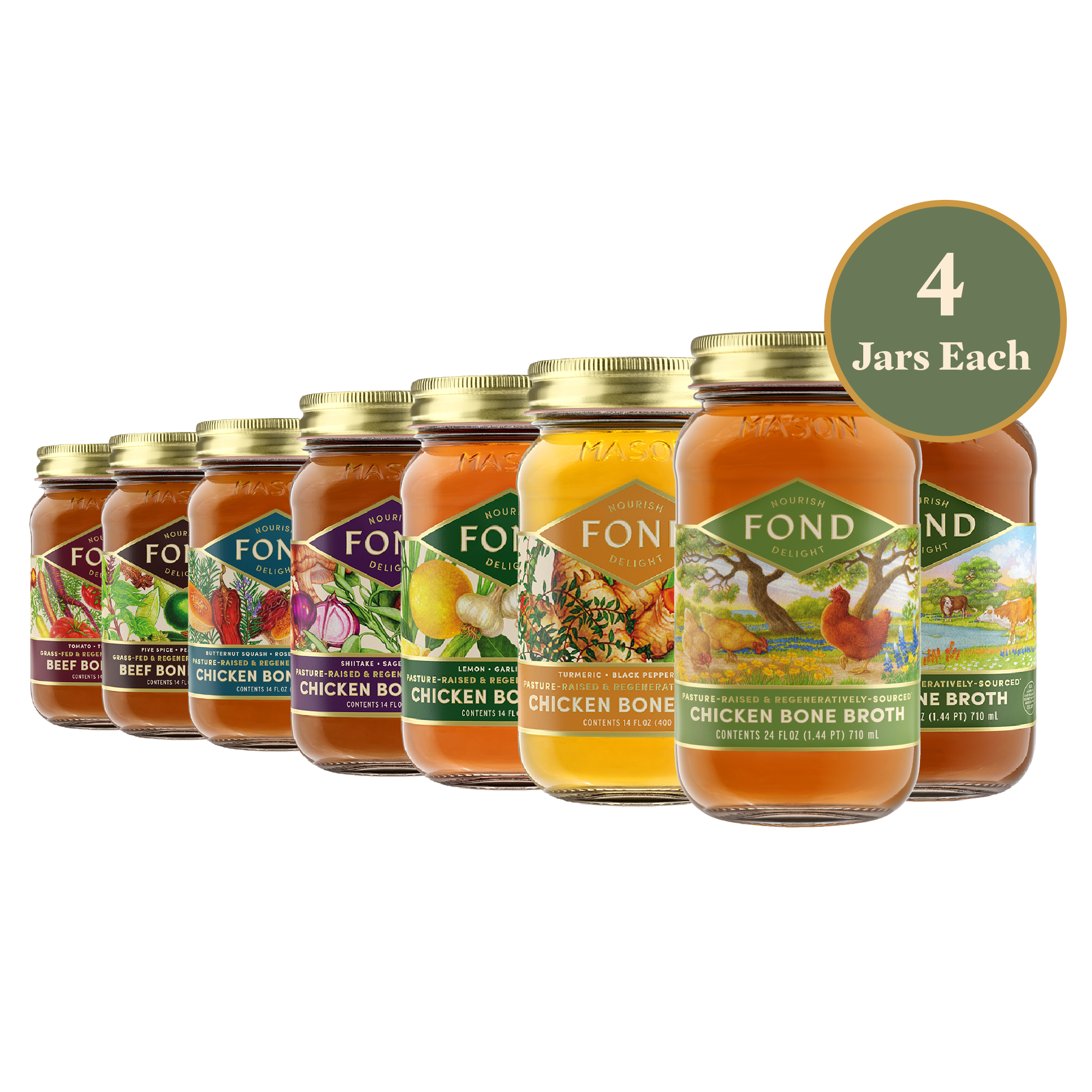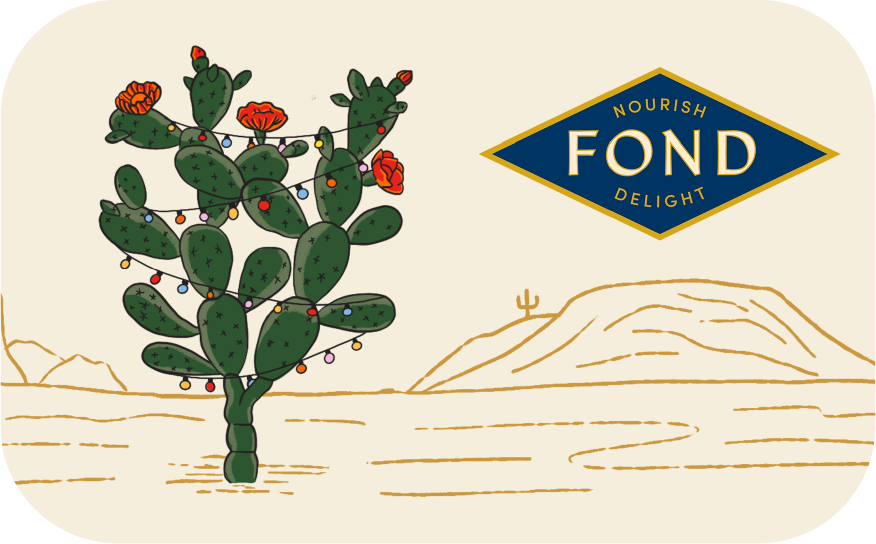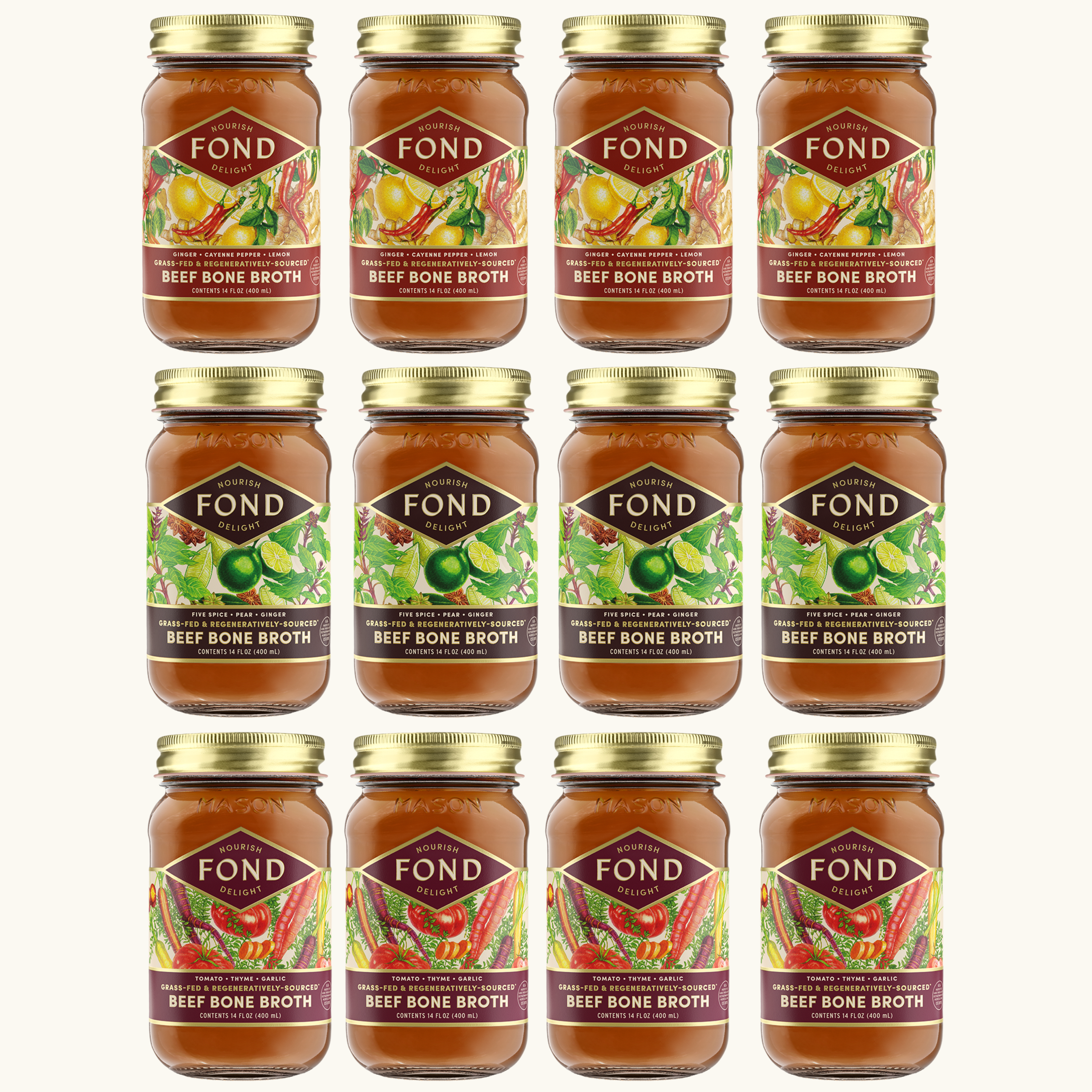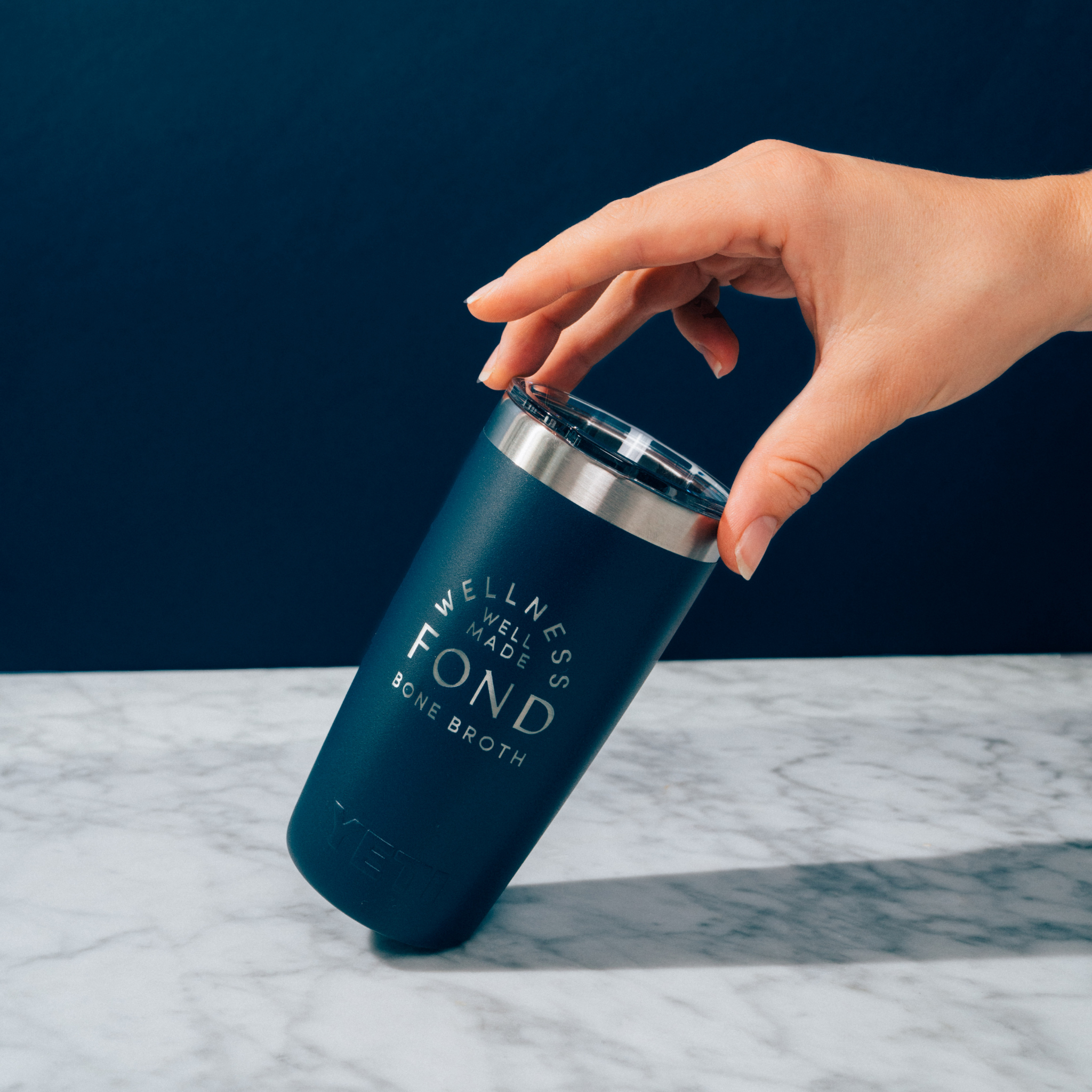With the impending launch of our regenerative beef tallow, we’ve been talking a lot about seed oils and better swaps (for both your health and for better flavor!). But we wanted to make sure that you had an educational hub for all things seed oils, since they have become a pervasive part of our food system over the past 100 years, and many health professionals are still recommending them to both patients and the general public.
At FOND, we are passionate about cutting through the nutrition noise and bringing health to your home, and your table. Part of this mission involves sharing sometimes disheartening, not-so-fun truths about the food industry. In this blog, our in-house RD Sam will share:
- What are seed oils and where are they found?
- Which seed oils to avoid
- History of the rise of seed oil popularity
- Industrial processing of seed oils, including methods and harmful compounds produced
- Health risks of seed oils
- Hidden seed oils, and the dangers of adulteration of healthier oils
- Alternatives to seed oils
- Breaking up with seed oils, including how to reduce consumption
What are seed oils and where are they found?
In the simplest terms, seed oils are a subset of vegetable oils that are made from the fat pressed from various seeds.
The most problematic seed oils include:
- Canola oil (also called rapeseed oil - watch for this sneaky form!)
- Corn oil
- Cottonseed oil
- Soy or soybean oil
- Sunflower oil
- Safflower oil
- Grapeseed oil
- Rice bran oil
History of their rise in popularity
Until about 100 years ago, both individual families and restaurants primarily used animal fats for all things cooking, frying, baking, and any other culinary pursuits. Even as recently as the 1980s, restaurants like McDonalds still used some animal fats. Those famous McDonalds fries? Up until the early ‘90s, they were made with beef tallow. Swapping to seed oils (and using beef flavoring instead of actual beef tallow) was both a flavor and a nutrition blunder.
And up until the late 1800s, even consumer goods like candles and soaps were made with lard or other animal fats. Under pressure to cut costs and with questions about the purity of animal fats thanks to exposes like Upton Sinclair’s ‘The Jungle’, producers looked to replace animal fats.
During the late 1800s, adulteration of higher-quality, more expensive fats like animal fats and olive oil also began, both as a way to cut costs and improve texture.
It all started with Crisco
The first mass-produced edible seed oil debuted in the early 1900s in the form of a partially-hydrogenated cottonseed oil called Crisco, a product of Proctor and Gamble. Cottonseed oil was toxic to consume in its less processed form, so intense refinement was required to make it into an edible food product. Though it took some time for Crisco to gain traction with consumers, eventually it did, in part due to little regulation around permissible health claims. This paved the way for mass production of other cheap seed oils, with marketing campaigns touting them as healthy and clean kitchen companions.
The rise in seed oil use and consumption throughout the 20th century was staggering, as was the rise in prevalence of chronic diseases like heart disease, obesity, and diabetes. This rise in seed oils meant that people were consuming huge amounts of fats (namely omega-6 linoleic acid and artificial trans fats) that had never before been seen in our diets.
During this time, the low-fat craze also began, where the demonization of saturated fat and cholesterol became the party line of every leading health organization. Without much evidence or any human trials, they began recommending seed oils to counteract these chronic health issues that were becoming more pervasive (likely due, at least in part, to the rise in seed oils!). Slowly, animal fats and saturated fats in general were removed from our kitchens and from our food supply.
Fast forward to today, you will find seed oils in almost every packaged product, in many home kitchens, and in almost every restaurant in the US. In fact, across the world, about 20% of our calories come from these industrially-produced oils. Here’s a non-exhaustive list of where you can find them:
- Restaurants, from fast food joints to 5-star culinary destinations
- Chips, crackers, and popcorn
- Baby formula
- Cookies and other desserts
- Dairy-free milks (for example, Oatly uses canola oil in the majority of their products)
- Coffee creamers
- Salad dressings
- Mayonnaise and other condiments
- Snack and protein bars
- Personal care products like cosmetics, soap, and perfume
- Candles
Industrial Processing of Seed Oils
Methods used
Since seed oils come from seeds that really don’t have much fat (just try squeezing the fat out of a soybean or sunflower seed!), they require heavy processing to go from their raw form to a consumable oil. This includes the use of high temperatures and harsh chemical solvents, along with chemical preservatives.
Here’s a helpful step-by-step breakdown of the making of most seed oils from the team over at Zero Acre:
- Seeds are gathered from plants such as corn, soybean, safflower, sunflower, rapeseed, and so on. Unfortunately, more land is devoted to vegetable oil crops than to all vegetables, fruits, legumes, nuts, roots, and tubers combined, resulting in record rates of deforestation —a leading driver of climate change [*,*].
- The seeds are heated to extremely high temperatures, causing oxidative damage and transforming some polyunsaturated fatty acids (PUFAs) into damaging trans fats.
- The seeds are then extracted with a chemical solvent, such as hexane, which allows for a more optimal yield [*].
- Next, the seed oils go through the process of high-heat deodorization, which may further damage the unstable PUFAs and increase the production of trans fat once again [*].
- Finally, chemical preservatives are sometimes added to enhance the shelf life of the oils, including the carcinogenic compounds BHT and BHA [*,*].
Health risks of seed oils
Thanks to their heavy processing and fat composition, seed oils can lead to a host of health issues.
Vert High Omega-6 (polyunsaturated linoleic) Fat Intake
To clarify - not all omega-6 fats are bad, and your body does require a small amount of these polyunsaturated fats! They occur naturally in foods like nuts. But too much of any fat will throw off your body’s fatty acid balance, particularly if you’re consuming hefty amounts of polyunsaturated fats in the form of these highly processed oils. To make matters worse, until the last 100 years, humans didn’t consume them, so they’re completely foreign to the body.
These oxidized omega-6 fats end up making up your cellular membranes, which leads to cellular damage, inflammation and oxidative stress from free radicals (among other things!) that leads to early aging, acne, chronic health issues, gut problems, and so much more.
The health issues associated with seed oils include diabetes, eye issues, heart disease, obesity, and autoimmune disease.
Trans Fats
Though you won’t see any trans fats listed on the nutrition facts panel, even unheated seed oils contain them (up to 3.6%). You might be wondering how the label can say 0g of trans fat if the oil or food product does contain them, and it’s a fair question! In short, this is because US labeling laws only require the disclosure of trans fats if the amount is more than .5g per 14g serving.
When heated, the amount of trans fat becomes much higher. And if the seed oil is reused for frying multiple times (a very common practice in the restaurant industry), the amount of trans fat will only increase from there.
Additives
As we touched on earlier, the necessary processing required to take a seed oil from seed to bottle includes the use of chemicals like hexane. Hexane helps increase yield, helping producers get more out of the raw seeds. But Hexane is also used in non-food industries, like varnishes, cleaning products, and ink.
To prolong shelf life, other chemicals are used as preservatives. They’re intended to prevent oil oxidation, but since industrial chemical options are used (including TBHQ and BHT), they’re unable to mimic natural antioxidants, and instead negatively impact health. Preservatives like TBHQ and BHT are considered carcinogens and are heavily restricted in European countries.
Rancidity
Since these seed oils have been so heavily processed, deodorized, and chemically treated with preservatives, they have no odor. There’s no way to know when your oil is rancid. When an oil goes rancid, it degrades and oxidizes, leading to further oxidation in your body when you consume it.
Hidden Seed Oils
Probably the most disheartening facet of the trouble with seed oils is in the adulteration of healthier choices, like extra virgin olive oil (EVOO) and avocado oil. We know that many of you are likely choosing these healthier options as an alternative to seed oils, maybe not realizing their highly adulterated nature.
Prevalence of Seed Oil Adulteration
First, what do we mean when we say adulteration? The process of adulterating oils involves cutting (mixing) a higher-quality option like EVOO or avocado oil with a cheaper, lower-quality oil like soybean or canola oil. It can also mean mixing a fresh oil with an older, rancid oil. Unfortunately, there aren’t currently US regulations in place to protect against this type of fraud, though there has been a push for this to happen, and we hope there will be in the future.
Companies adulterate healthier oils for a number of reasons, including to reduce costs and increase profits, and sometimes to improve texture or consistency of the finished product. Frankly, they continue to operate this way because they can.
Recent research from the University of California, Davis showed that over 80% of the avocado oil samples they tested were either stale (rancid) before their expiration date or mixed with other lower-quality oils. In three cases, bottles labeled as “pure” or “extra virgin” avocado oil were nearly 100% soybean oil. When avocado oil goes rancid and oxidizes, it loses its flavor and health benefits. This oxidation happens because of exposure to too much light, heat, or air. They tested 22 domestic and imported avocado oils. Of them, 15 were oxidized before their expiration date and six of them were mixed with large amounts of low-quality oils that included sunflower, safflower, and soybean oil.
Unfortunately, EVOO doesn’t have a better track record with adulteration, and in fact has been cut with cheaper oils for a very long time, as far back as ancient Rome. There’s a lot of room for fraud along the supply and production chain for EVOO, since olive oil is typically extracted in one country, then shipped elsewhere and blended with oil from other places, then bottled and shipped again. The most common adulteration is when EVOO is mixed with older oil that’s from the past year’s harvest (or older). This is a legal process, but means that by the time the oil reaches store shelves, its lauded health benefits have been greatly diminished. A less common practice, one that’s illegal per the IOC (International Olive Council) is cutting EVOO with soybean oil or other seed oils, or even mixed with a lower-quality olive oil that’s been chemically refined. But that doesn’t mean it doesn’t happen.
To show how widespread this issue is, within the last two years, Italy (the largest EVOO producer) confiscated more than 2,000 tons of fraudulent olive oil and began investigating seven of Italy’s top EVOO producers.
Olive Oil and Avocado Oil
Thankfully, there are brands doing the right thing and producing high-quality EVOO and avocado oils.
The two brands of avocado oil that the UC Davis researchers found to be completely pure and non-oxidized were Chosen Foods and Marianne’s Avocado Oil, both refined avocado oils from Mexico. CalPure, from California, was pure and fresher than other virgin, unrefined samples they tested. Other tips that the researchers gave included:
- The flavor of virgin avocado oil should be grassy, buttery, and slightly mushroom-y.
- Virgin avocado oil should be green, and refined avocado oil should be light yellow or almost clear due to color pigments being removed during the refining process.
- Even the highest-quality oil will become rancid over time, so purchase a size that you can finish before the expiration date, and store it away from light and heat.
- Choose an oil that’s as close to the harvest or production date as possible, since the best-by date is not always a great indicator of quality.
- A rancid oil will start to smell stale, almost like play dough.
When it comes to olive oil, shopping at a specialty olive oil shop (especially if you can taste before you buy!) or a reputable grocery store can really help.
- Only buy extra virgin olive oil, since anything else, including virgin, pure, or simply olive oil, is almost guaranteed to be a low-quality product.
- Look for the harvest date on the label (it may also be called the ‘pressed on’ date). The label may also call out the producer or estate, which is a very good sign.
- Look for the free fatty acid acidity level, or FFA. A high-quality EVOO option will have .2% or lower.
- EVOO from Australia or Chile is always a great option.
- Look for a third-party certification on the label.
- High-quality EVOO should taste peppery, while fake olive oil will probably taste gross or greasy.
And as with avocado oil, the best-by and bottled on dates are generally not helpful in determining quality or freshness.
Negative Environmental Impact of Seed Oils
While we won’t dive into this topic deeply in today’s blog, all seed oils, including vegetable oils like coconut, olive, and avocado oils, have negative environmental impacts, from extremely high water use to deforestation.
True Alternatives to Seed Oils
Butter
Butter is a great option for lower heat cooking and baking, and it happens to taste really delicious too! We always opt for grass-fed brands like Kerrygold, Lewis Road, or Vital Farms for more nutrients, like vitamin K and conjugated linoleic acid (CLA).
Animal fats like pork lard and duck fat
These traditional fats are very stable and less prone to oxidation, especially for cooking. They have very high smoke points, meaning that you can use them for everything from sauteing and baking to frying foods. Always opt for the highest-quality option that you can afford! We've even created the most nutrient-dense Lard for your pantry!
Tallow
Beef tallow, particularly regenerative 100% grass-fed options, are truly game-changing for all of your kitchen needs.
If you’re wondering why we decided on tallow as the next addition to our nourished, foundational food pantry, we talked all about it here.
Not only is it a great alternative to seed oils for high-heat cooking like frying, but it’s also an incredibly flavorful addition to all of your other cooking and baking, and it’s been used for thousands of years (generally the sign of a health-promoting ingredient or product!).
The benefits are vast. Every time you cook with tallow, you’re adding nutrients to your diet, and you’re also making fat-soluble vitamins like A, D, E, and K easier to absorb. You’re supplying your body with vitamins A,D,E,K, and B12, choline, Conjugated Linoleic Acid (CLA), hefty amounts of monounsaturated fats (the same extra virgin olive oil is heralded for), and beneficial saturated fat.
What this can mean for your health:
- Improved cognition and brain health (a lot of your brain is made of cholesterol and fat)
- Enhanced metabolism thanks to CLA
- Improved HDL cholesterol
- More balanced blood sugars thanks to tallow’s composition; a mix of nourishing fats, including saturated fat, which in some cases can improve Type 2 Diabetes
Tallow contains a mix of saturated and monounsaturated fat. While we were told for decades to avoid saturated fat, there’s no solid evidence that shows avoiding them is beneficial for heart health. In fact, saturated fats can have a beneficial impact on health, particularly when they’re from a high-quality source and paired with a nourishing diet.
Wave Goodbye to Seed Oils
Our goal isn’t to scare you, but to empower you to choose easy swaps for your kitchen, and your health. Thankfully, whether you choose butter or tallow, swapping your seed oils for a nourishing option is as simple as a 1:1 swap.
Tips for reducing seed oil consumption
At home, replacing your seed oils is easy! Just replace the oil you normally use with one of our healthier alternatives. It’s a 1:1 swap, no matter what you’re cooking up! If you’re making a salad dressing or condiments at home, opt for a high-quality EVOO or avocado oil, or an option like Zero Acre oil.
Unfortunately, dining out is a lot harder, since seed oils are so pervasive in almost all restaurants. When you do go out to eat, ask questions! Ask what they’re cooking their food in, and whether they’d be able to cook your eggs, steak, etc, in butter instead. Avoid fried foods entirely, unless you know that the restaurant uses animal fats in their fryer. For larger chains, you can also check the ingredients on their website to see if they offer any seed oil-free items. There are also apps (like Seed Oil Scout) and websites (like this one) that can guide you to restaurants in your area that don’t use seed oils in their cooking, or go seed oil-free for certain menu items.
Importance of reading labels and sourcing from high-quality brands
Brands can be really deceptive when it comes to their packaging and labels, and unfortunately the onus is on you, the consumer, to decipher fact from fiction. Just like sugar is named on labels many different ways, sometimes seed oils are too. Just take rapeseed oil. It’s the same thing as canola oil, yet some brands will list rapeseed oil instead, since they know consumers are less familiar with that name. Always read a product’s label before buying, and make sure the label doesn’t list any of the seed oils we mentioned at the beginning of this blog.
Most importantly, source from brands you trust, that value sourcing and transparency. Our beef tallow is the only verified regenerative option on the market, with the purest ingredients. You can use it liberally with the confidence that it will never be adulterated.










